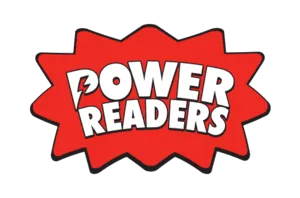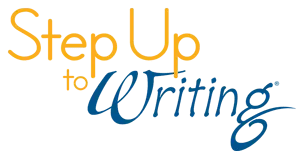Nurturing Literacy Skills Through Emergent Reading
Emergent reading is the foundational stage where children explore language through sounds, symbols, and early interactions with print before they can read independently. This stage is crucial as it lays the groundwork for future literacy skills. Early experiences, such as recognizing letters on cereal boxes and doodling, evolve into reading and writing. In language-rich environments with interactive reading sessions, storytelling, and hands-on activities, children develop vocabulary, comprehension, and communication skills. Educators can support emergent readers by fostering a print-rich classroom, providing engaging literacy activities, and tailoring instruction to meet diverse needs. Overcoming challenges such as phonemic awareness difficulties and limited vocabulary with targeted strategies ensures children build strong literacy foundations and a lifelong love for reading.
Emergent readers are those who, long before they articulate words or use a pencil, explore language through sounds and symbols. From spotting letters like "C" on a cereal box to doodling on paper, these early experiences lay the important foundation for future literacy skills. As they continue to explore and develop, those scribbles transform into recognizable letters, words, and eventually sentences. This blog post discusses emergent readers, how reading skills develop, challenges they may encounter, and strategies teachers can use to enhance these foundational skills.
What is Emergent Reading?
Emergent reading is the initial stage of reading development, where children grasp basic reading and literacy concepts before they can read independently. They naturally learn early reading skills from books, talking with adults, and being in language-rich settings. These environments include activities like interactive reading sessions, storytelling, and creative play, along with a print-rich setup featuring books, labels, posters, and pictures. The emergent reading stage is critical, because it sets the groundwork for future reading success by helping children develop vocabulary, comprehension, and communication skills.
Defining an Emergent Reader
Determining if a child is an emergent reader depends on a few things. Unlike early emergent readers who are just starting out, emergent readers can often read with assistance. They are typically developing skills such as recognizing letters, basic sounds, and understanding that written words carry meaning. A clear sign of progress is when they start grasping word meanings without having to sound out every word. Teachers may recognize an emergent reader by observing:
- Understands basic concepts of print (left to right, top to bottom)
- Developing awareness of sounds in language
- Knowing some letters of the alphabet
- Understanding that writing carries a message
- Beginning to identify letters and associate them with sounds
- Reading some common, high-frequency words
- Asking questions about stories or text read aloud
- Attempting to sound out simple words
- Showing interest in books
- Starting to experiment with writing letters or words
The Developmental Stages of Emergent Reading
- Pre-Reading Stage: During this foundational stage, children are introduced to books and print materials, though they do not yet grasp the concept of print conveying meaning. To help young readers progress, teachers should regularly introduce children to new books, encourage storytelling and discussions, and model how to handle books (turning the page, reading from top to bottom, left to right). Additionally, the classroom environment should be print-rich, displaying labeled areas, signs, and colorful alphabet charts and posters so learners are always engaging with print.
- Decoding Stage: In this stage, children begin recognizing letters and understanding they represent sounds (phonemic awareness). They also learn to differentiate between uppercase and lowercase letters. Early phonics instruction becomes highly important, focusing on letter-sound correspondences through explicit teaching and interactive activities. Games, songs, and manipulatives are effective tools for reinforcing these relationships and guiding students in blending sounds to read simple words like CVC (consonant-vowel-consonant) words.
- Fluent Stage: As children continue to progress, they transition to the fluent reading stage, where they start comprehending word meanings more automatically. They develop fluency in reading simple texts and recognizing common sight words, demonstrating increased independence in reading and comprehension. Activities such as repeated readings of familiar texts, sight word drills, and exposure to genre fiction help build fluency and engagement with reading. To keep young readers excited, teachers may dedicate time during the school day for students to choose and read books independently, ensure easy access to a diverse range of books at different reading levels, and offer incentives or rewards for students who track their reading progress.
- Expert Reader: At the expert reader stage, children no longer need assistance with reading and are able to choose their own books and form preferences. They read for comprehension and engage with texts to understand meaning beyond word recognition. They can read aloud with appropriate pauses for punctuation, demonstrating mastery in comprehension skills. Educators should focus on teaching comprehension strategies like predicting, summarizing, questioning, and making connections to promote critical thinking and deep understanding of texts. A classroom library that contains various reading levels can support comprehension and promote a love for reading.
How to Engage and Excite Your Emergent Reader
Engaging and motivating emergent readers is extremely important for encouraging a love for reading and supporting their literacy development. Teachers may do this through:
- Interactive Read-Alouds: Teachers may engage students by reading aloud with enthusiasm, using expressive voices, and pausing to ask questions or discuss the story. They can ask students to predict what might happen next or connect the story to their own experiences.
- Hands-On Literacy Activities: Engagement through play can make learning tangible and fun. Hands-on activities allow students to actively participate with reading and language concepts instead of passively receiving information. For example, students can use letter blocks to build words, trace letters in sand, or play a letter-sound matching game.
- Book Choice: When learners can pick books they're interested in, such as ones about space, dinosaurs, or animals, they tend to stay motivated and excited about reading. Having a mix of genres, formats, and authors in school libraries can help emergent readers stay curious and explore new types of stories they might enjoy.
Why the Emergent Reader Stage is Critical
REWARDS® author and literacy expert Dr. Anita Archer says, “There is no comprehension strategy powerful enough to compensate if a student can’t read the words." This highlights just how critical emergent reading is for children, because it forms the basis for all future reading skills. Without mastering these fundamental skills early, children may struggle with reading comprehension and overall literacy proficiency later in school.
To facilitate successful progression through this emergent reader stage, teachers and administrators must join together to foster a schoolwide culture that prioritizes literacy development. When administrators support teachers by providing solutions and professional development opportunities, teachers are better supported in providing instruction and tailoring instruction to specific learning needs. This collaboration ensures students receive the necessary guidance and solutions to build strong literacy skills.
Evidence-Based Strategies for Supporting Emergent Readers
The essential components of reading instruction include phonics, phonemic awareness, fluency, vocabulary, and reading comprehension. To help emergent readers continue building and practicing these foundational skills, teachers can implement these evidence-based strategies:
- Letter Formation Practice Sheets: These sheets help reinforce letter recognition and handwriting skills by allowing students to practice forming uppercase and lowercase letters.
- Alphabet Books: These books introduce each letter of the alphabet alongside corresponding names and pictures, facilitating letter-sound associations and vocabulary development.
- Phonemic Awareness Activities: Activities like rhyming games, sound segmentation, and phoneme manipulation help to develop phonemic awareness skills needed for early reading and language development.
- Read-Aloud Books: Read-aloud books model proper reading behaviors, introduce new words, develop listening skills, and support phonemic awareness. For example, when reading The Very Hungry Caterpillar aloud, readers are modeling fluent reading behaviors, while also engaging in new vocabulary surrounding days of the week, counting, and the life cycle of a butterfly.
- Interactive Writing Activities: Students may participate in writing tasks to reinforce letter-sound connections and language developments. This can include building words with letter tiles, labeling key elements or describing what they see in a picture, or participating in shared story writing as a class or small group.
- High-Frequency Word Practice: Word cards and games allow students to practice sight words regularly, promoting fluency and automaticity in reading.
- Repeated Reading Passages: Students can read these short passages multiple times to practice fluency, develop vocabulary and comprehension, and improve reading expression and appropriate pausing for punctuation.
- Vocabulary Graphic Organizers: Visual tools like picture dictionaries and word meaning maps can support vocabulary learning and comprehension. For emergent readers, simplicity and visual support are key. A vocabulary organizer may provide the definition for the word "animals," along with categories for types of animals and where they live. Students may draw visuals related to these categories to reinforce their understanding and stay engaged in the learning process.
When implementing strategies in the classroom, teachers should tailor instruction to meet the needs of diverse learners. This includes providing extra support for struggling readers and more challenging activities for advanced students. By regularly practicing skills in different situations and continually monitoring how students are doing, teachers can make changes to their teaching methods as needed to ensure they are as effective as possible.
Overcoming Challenges With Emergent Reading
While some students will pick up the foundational skills of reading relatively easily, some may struggle. Teachers need to know how to spot these potential challenges and understand what they can do to support those who need more support. Common challenges for emergent readers include:
- Phonemic Awareness Difficulties: Some students may struggle with identifying and manipulating individual sounds in words, affecting their ability to decode and read accurately. Teachers can address this challenge by incorporating interactive phonemic awareness activities such as rhyming games, blending and segmenting sounds, and providing explicit instruction in phonics.
- Limited Vocabulary: Emergent readers may encounter difficulties understanding and interpreting unfamiliar words, leading to comprehension issues. To overcome this challenge, teachers teach vocabulary explicitly during shared reading sessions, and provide opportunities for students to use new words in meaningful contexts through writing and discussion.
- Fluency and Expression: Some students may read slowly and lack expression, impacting their overall reading comprehension and engagement. Teachers can improve fluency by providing repeated readings of familiar texts, modeling fluent reading, incorporating fluency-building activities such as reader's theater, and encouraging oral reading with expression during small-group or one-on-one sessions.
Reading Solutions from Voyager Sopris Learning
Voyager Sopris Learning® offers a range of reading and writing solutions designed to support emergent readers in classrooms:
- Power Readers: This series offers 28 decodable stories accompanied by skill-building activities, guiding students through phonological awareness, decoding, fluency, vocabulary, and comprehension. Designed for K–1 students or for targeted reading support in lower elementary grades, Power Readers helps readers feel confident and powerful.
- Sound Partners: This is a targeted tutoring program rooted in research, aiming to strengthen early reading abilities through explicit, systematic instruction. It focuses on phonemic and alphabetic skills, decoding, and oral reading using decodable texts, benefiting K–1 readers and offering intervention for older students in grades 2–3.
- Step Up to Writing®: This solution teaches students the writing process step by step, fostering confidence and proficiency as they advance. With multimodal instruction, flexible implementation, and support across content areas, it equips students with proven strategies for successful composition in any subject, at all grade levels.
Key Takeaways and Next Steps
Emergent reading is the initial stage of reading development where children begin to grasp basic reading and literacy concepts for future literacy success. Each stage is essential, because progress builds upon the previous one. Through collaborative efforts, educators can create an environment where students are supported and engaged. By addressing challenges with targeted instruction and cultivating a culture of reading across the school community, emergent readers not only develop foundational literacy skills but also a lifelong love for reading.



